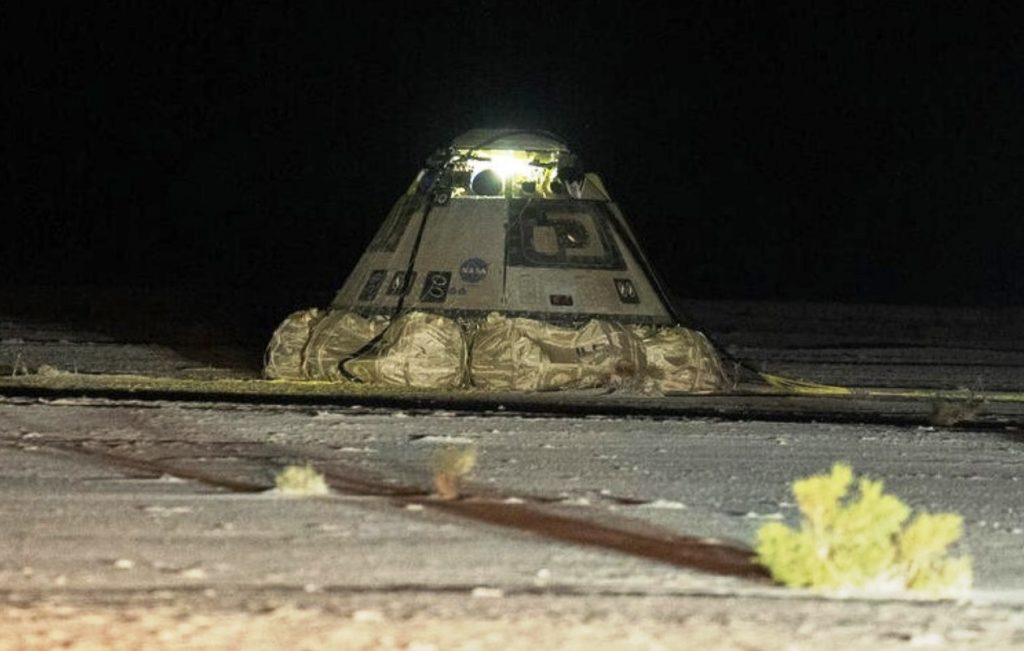Boeing’s Starliner space capsule successfully made an uncrewed descent from the International Space Station back down to Earth, despite some concerns about the propulsion system. The capsule, named Calypso, landed at White Sands Space Harbor in New Mexico. Due to issues with five thrusters and helium leaks, NASA astronauts Butch Wilmore and Sunita Williams encountered troubles during their docking approach on June 6. Although four thrusters were reactivated, the concerns prompted them to stay on the space station for an extended period.
NASA decided to reduce the size of the next crew, known as Crew-9, from four to two spacefliers who will travel to the space station in a SpaceX Crew Dragon capsule in September. Williams and Wilmore will return to Earth in the SpaceX capsule in February next year. Despite the propulsion system issues, Starliner successfully launched and performed the necessary rocket firings for a smooth descent through the atmosphere. Only one thruster out of the set of 28 had to be taken offline due to performance concerns. Overall, the landing was relatively trouble-free compared to previous attempts.
Boeing’s Starliner program has faced years of delays and about $1.6 billion in cost overruns. An uncrewed test flight in 2019 experienced issues, leading to a re-do in 2022. NASA and Boeing will now analyze the data from the recent test flight to determine the program’s future direction. Steve Stich, program manager for NASA’s Commercial Crew Program, expressed satisfaction with the vehicle’s performance and highlighted the need to address any outstanding issues before proceeding with crewed flights in the future.
Boeing Vice President Mark Nappi commended the Starliner teams for ensuring a successful landing process, including undocking, deorbit, re-entry, and landing. The team will review the data and plan the next steps for the program. NASA Administrator Bill Nelson emphasized the importance of having two spacecraft, including Starliner and SpaceX’s Crew Dragon, for redundancy in crew transportation to the space station. NASA’s associate administrator for space operations, Ken Bowersox, reaffirmed the agency’s commitment to working collaboratively with both Boeing and SpaceX to resolve any challenges that arise during the commercial crew program.
Overall, the successful landing of Boeing’s Starliner capsule marks a significant step forward for the program despite past setbacks and concerns about the propulsion system. The collaboration between NASA, Boeing, and SpaceX highlights the importance of working together to overcome obstacles and ensure the safety and reliability of crewed space missions. With plans for future crewed flights to the International Space Station, continued evaluation of data from test flights will be crucial in determining the program’s readiness for future missions.


